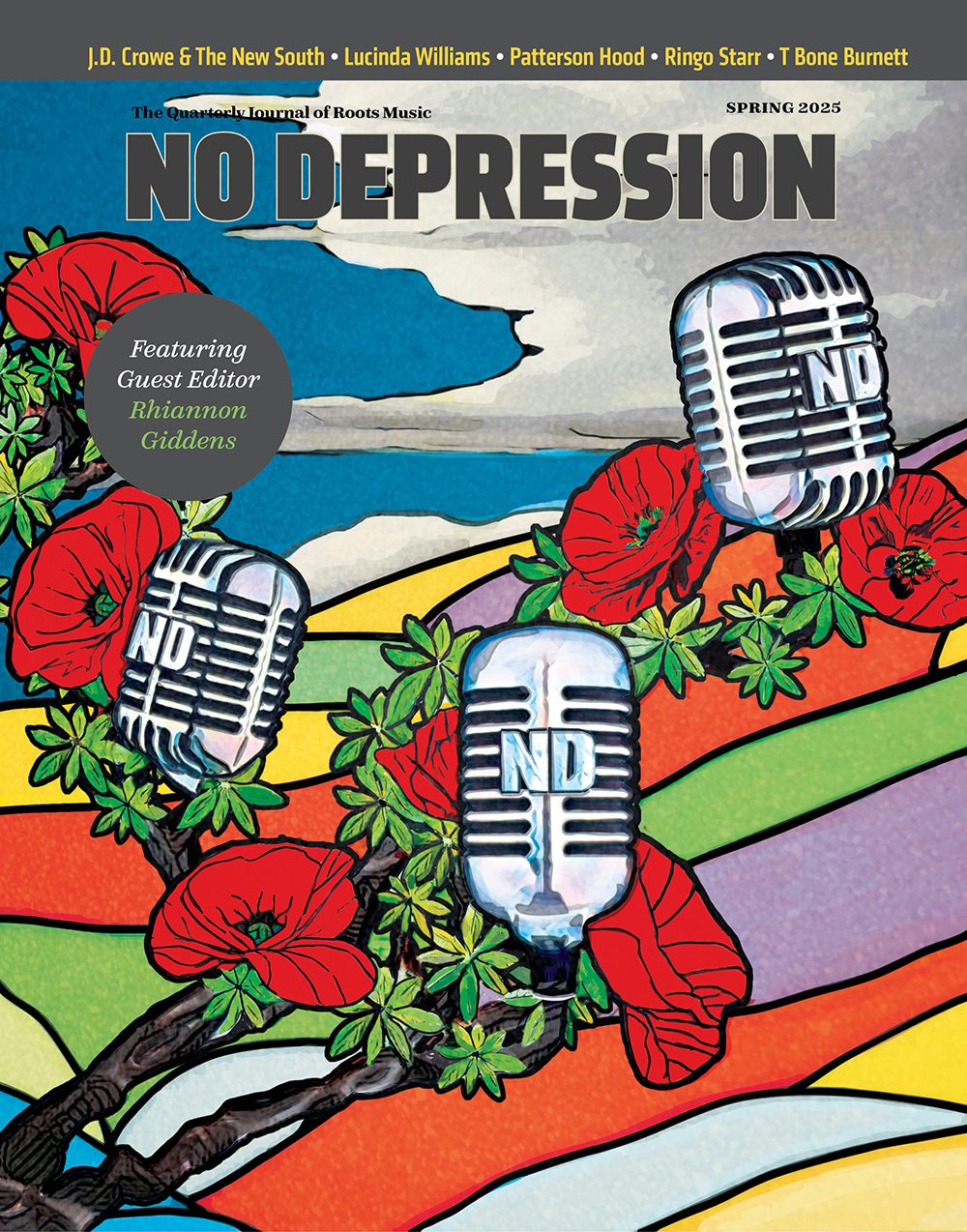BONUS TRACKS: Songs for Earth Day and More Roots Music News

Jobi Riccio - Hardly Strictly Bluegrass 2024 - Photo by Peter Dervin
With Earth Day on Tuesday and Arbor Day today, we thought it prudent to share some roots music in honor of the planet, the trees, and our urgent, global need for environmental protections.
Nashville-based alt-country artists Jobi Riccio (ND review) released a new, one-off single on Earth Day called “Wildfire Season.” Artist statement and song below:
“Be ruthless to systems and kind to people.” Someone recently shared this quote from Michael Brooks with me, and this ethos is what I was channeling when I wrote “Wildfire Season” in 2021, and what I think about when I perform the song as the climate crisis continues to displace millions and steal the futures of generations. The song speaks to the rage and grief watching this crisis unfold has brought me pretty bluntly, because I believe sometimes the kindest way to tell someone how you feel is directly and clearly, and with a song that speaks to an issue that affects everyone, it truly comes from a place of deep love.
I started the song in 2020 when my home state Colorado and the west suffered fires that made national headlines for turning the sky a hellish orange. When the Marshall fire hit suburbs between Boulder and Denver, CO in December of 2021 — far out of the scope of the “season” for fires — I felt compelled to finish it. I wondered when my hometown of Morrison, CO would be next, sparking inspiration for the first lines of the song.
It seemed then, as it does now in the aftermath of disasters like Hurricane Helene and the LA fires, all anyone with power and money seemed to want to talk about was colonizing mars, artificial intelligence technology that uses more — not less — resources, and expanding profits for their shareholders. As a 26 year old in 2025, 20 of the largest wildfires in Colorado’s history have happened in the last 20 years, aka in the majority of my lifetime. Sadly this trend seems to be reflected for almost any natural disaster on local and global scales. Growing up in the shadow of the climate crisis I’ve felt every shade of rage at corporations that knowingly continue to exact and exploit land and people, despite the mounting evidence that the future of humanity lies in the balance, or to use my own lyrics, we are “hunted by the hands of time.” I believe in the necessity of Indigenous leadership and empowerment, which I speak to in the second verse, and see the way forward as led in partnership with those who lived and tended to this land before my ancestors. I hope this song can be a rallying cry to organizations and activists working to hold corporations accountable, for the Indigenous LAND BACK movement, and a moment of catharsis for all those in need of it, especially those of us young enough to have to live longer with these consequences. — Jobi Riccio
Also on Tuesday, fellow Nashvillian Jack Van Cleaf released a climate change-themed music video for his song “Green.” Van Cleaf, whose music traverses pop, country, and indie rock, will release his sophomore LP, JVC, May 9 via Dualtone Records. Artist statement and song below:
Green shows up in a lot of lyrics throughout JVC, and I considered making “Green” the title track for a while. It’s an environmental song. I wrote the verses of “Green” inspired by a monologue in the movie The Green Knight, wanting to illustrate a completely overwhelming, inescapable force behind the color. I also read this book called The Overstory, another influence on this song; the final argument the book seems to put forth is, “If you don’t want to save the planet for the planet’s sake, save it for your sake.” I’ve heard this argument from others as well: Mother Earth is stronger than we give her credit for; if we pit ourselves against her, she will win and move on without us. “Green” is a song of praise for nature, our creator and our destroyer if we force her hand. — Jack Van Cleaf
But if singles aren’t enough, No Depression‘s sister site, Folk Alley, has multiple playlists for the planet. This week’s radio show features two hours of themed music, plus, this five-hour Holiday Stream is dubbed the “Mother Earth Mix.”
Of course, No Depression is no stranger to covering sustainability in the roots music community. Check out our entire Winter 2020 issue called “Going Green” here and read a journal excerpt on making vinyl records more Earth-friendly here.
In other roots music news this week, two long-time No Depression favorites announced new records! The Swell Season (comprised of Glen Hansard and Marketa Irglova) will return after 16 years with Forward, due out June 13. No Depression last spoke with both of them in 2022 around the 15th anniversary of the beloved music movie Once. Additionally, Hayes Carll, whose essay from 2019 titled “If I May Be So Bold” is still one of the most-read stories we’ve published, will release We’re Only Human on August 8. Check out new singles from both of these artists below:
WHAT WE’RE LISTENING TO:
Mark Rubin – Dispatches: Songs from a World Gone Mad (due out May 1)
Bells Larsen – “Might” (from their album Blurring Time, due out today via Royal Mountain Records)
Andy Frasco & The U.N. – “Life is Easy” ft. Billy Strings, Steve Poltz, Daniel Donato & Mike Gordon (from their album Growing Pains, due out May 25 via Regime Music Group)




